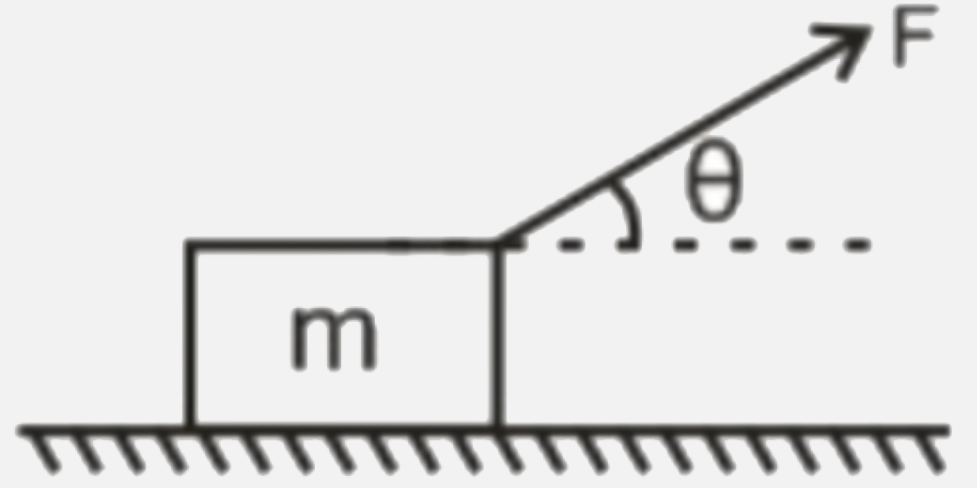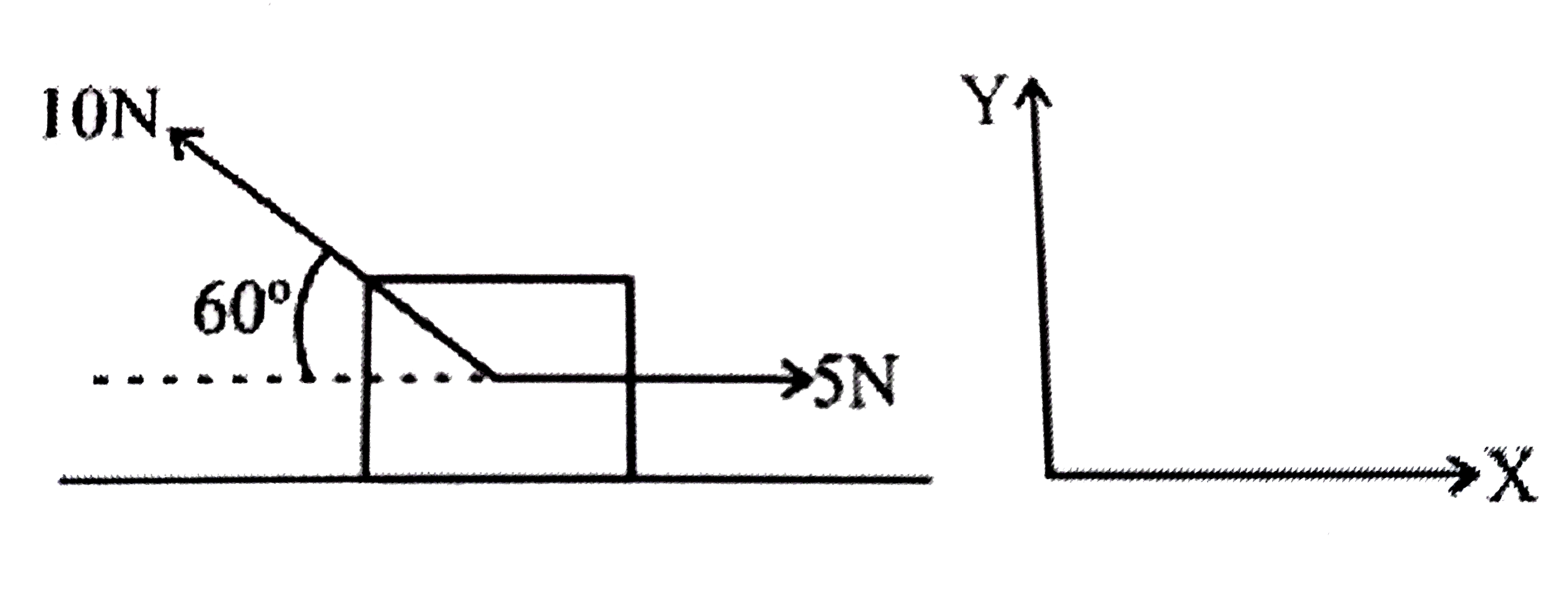A block of mass m is at rest on a frictionless, horizontal table placed in a laboratory on the surface of Earth. An identical block is at rest on a frictionless, horizontal table placed on the surface of the moon. Let F be the net force necessary to give the earthbound block an acceleration of a across the table. Given that gmoon is one sixth of gEarth, the force necessary to give the moon-bound block the same acceleration a across the table is
F12
F6
F3
F
The correct Answer is:D
The horizontal motion across the frictionless tables is unafflected by (vertical) gravitational acceleration. It would take as much force to accelerate the block across the table on Earth as it would on the moon. (If friction were taken into account, then the smaller weight of the block on the moon would imply a smaller normal force by the table and hence a smaller frictional force. Less force would be needed on the moon in this case).
Topper's Solved these Questions
Similar Questions
A block of mass M placed on a frictionless horizontal table is pulled by another block of mass m hanging vertically by a massless string passing over a frictionless pulley. The tension in the string is :
View SolutionA wooden block of mass m resting on a rough horizontal table is pulled by a force F as shown in the figure. If μ is the coefficient of friction between block and table, its acceleration will be

View Solution
Knowledge Check
A block of mass M placed on a frictionless horizontal table is pulled by another block of mass m hanging vertically by a massless string passing over a frictionless pulley. The tension in the string is :
AmM+mgBMM+mgCM+mmngDMnM+ngA block is placed on a horizontal table. Identify the force of action
Aweight of blockBsupport of table on the blockCeither (a) or (b)Dneither (a) nor (b).A block of mass √3kg rests on a horizontal frictionless surface. What will be the acceleration of the block if it is subjected to two forces as shown in the figure.
 AAcceleration will be along Y-axisBAcceleration will be along X-axisCAcceleration will be in between X & YDNo acceleration will be there
AAcceleration will be along Y-axisBAcceleration will be along X-axisCAcceleration will be in between X & YDNo acceleration will be there
A wooden block of mass m resting on a rough horizontal table is pulled by a force F as shown in the figure. If μ is the coefficient of friction between block and table, its acceleration will be

View SolutionA block of mass m is placed at rest on a smooth wedge of mass M placed at rest on a smooth horizontal surface. As the system is released

View SolutionA block of mass m is placed at rest on a smooth wedge of mass M placed at rest on a smooth horizontal surface. As the system is released

View SolutionA horizontal force of 4 N is applied to a block of mass 2 kg resting on a frictionless table. What is the acceleration of the block in ms−2 ?
View SolutionA block of mass 500 g is at rest on a horizontal table. What steady force is required to give the block a velocity of 200cms−1 in 4 s ?
View Solution
